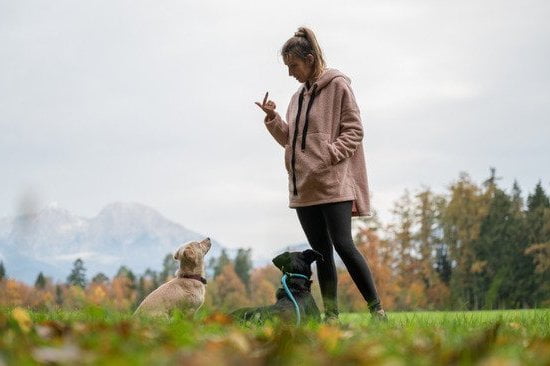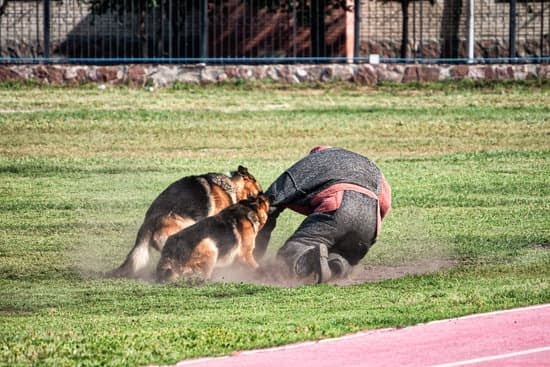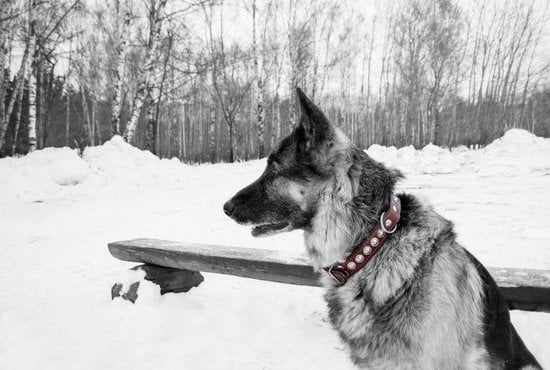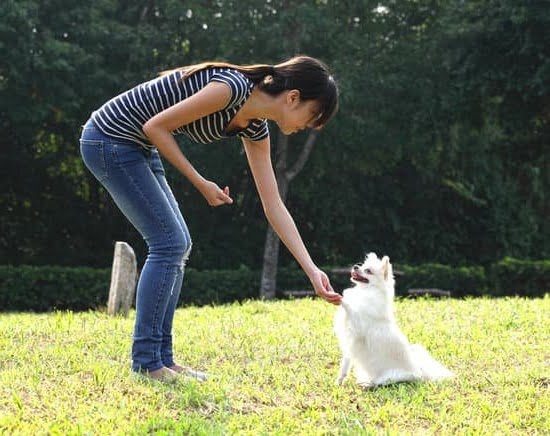Is it easy to train a rescue dog? Training a rescue dog can be both challenging and rewarding. Understanding the unique background and potential behavioral issues of rescue dogs is essential for successful training. Patience, consistency, and building trust are key elements in training a rescue dog, and utilizing effective training methods and addressing common challenges play crucial roles in the process.
Rescue dogs often come from uncertain or traumatic backgrounds, which can lead to behavioral issues such as fear, anxiety, and aggression. This can make training more challenging compared to working with a dog from puppyhood. However, the bond formed with a rescue dog through training can bring immense fulfillment and joy.
In this article, we will explore the history of rescue dogs, the importance of patience and consistency in training them, techniques for building trust and rapport, various training methods such as positive reinforcement and clicker training, addressing common challenges in training rescue dogs, the role of socialization in their development, as well as available resources for support.
By understanding these aspects, you will be better equipped to navigate through the challenges while reaping the rewards of training a rescue dog with love and patience.
The Background of Rescue Dogs
Rescue dogs come from various backgrounds, including being abandoned, lost, or surrendered by their previous owners. The history of rescue dogs can significantly impact their behavior and temperament. Many rescue dogs may have experienced trauma or neglect, leading to potential behavioral issues such as fear, anxiety, or aggression. Understanding the background of rescue dogs is crucial for effectively training them and helping them adjust to their new home.
Behavioral Issues of Rescue Dogs
Rescue dogs may exhibit a range of behavioral issues due to their past experiences. They may struggle with separation anxiety, have trust issues, or display fear-based behaviors. It is essential for dog owners to be patient and empathetic when addressing these challenges and be prepared to invest time and effort into training and socializing their rescue dog.
History and Breeds
It’s important to consider the breed and history of a rescue dog when understanding their behavior. Some breeds may have specific traits or tendencies that need to be addressed during training. Additionally, knowing the dog’s history can provide insight into any potential triggers that may cause certain behaviors.
Training a rescue dog requires an understanding of their background and patience in addressing any behavioral issues that may arise. Every dog is unique, so it is important to approach training with an open mind and a willingness to adapt methods based on the individual needs of the rescue dog. With the right approach and consistent training, it is possible to help a rescue dog overcome their past experiences and become a well-adjusted family member.
The Importance of Patience and Consistency in Training a Rescue Dog
Training a rescue dog can be a rewarding but challenging experience. These dogs often come from uncertain or traumatic backgrounds, which can lead to behavioral issues such as fear, anxiety, and aggression. Therefore, it is crucial to understand the importance of patience and consistency when training a rescue dog.
One of the key factors in successfully training a rescue dog is having patience. It’s important to remember that these dogs may have never received any prior training or may have experienced negative interactions with humans in the past. As a result, they may require more time and understanding to learn new behaviors and commands. Patience is essential for building trust and providing a safe environment for the dog to learn and grow.
Consistency is equally important when it comes to training a rescue dog. Establishing consistent routines, rules, and boundaries will help the dog feel secure and understand what is expected of them. By consistently reinforcing positive behaviors and using the same commands, you can help your rescue dog build confidence and feel more secure in their new environment.
It is also important to keep in mind that every rescue dog is unique and will have their own individual needs, so the training process may vary from one dog to another. Consistently practicing patience with your rescue dog while being consistent in your training methods will set them up for success as they work on overcoming their past experiences.
Building Trust and Rapport With Your Rescue Dog
Rescue dogs often come from difficult or traumatic backgrounds, which can make it challenging for them to trust humans. Building trust and rapport with a rescue dog is essential for a successful training experience and a long-lasting bond. One technique for establishing a strong bond with your rescue dog is to be patient and understanding of their past experiences. This means being gentle and allowing the dog to come to you on their own terms, rather than forcing interaction.
Consistency is also key in building trust with your rescue dog. Stick to a regular routine for feeding, walking, and training, as this can help the dog feel more secure and understand what is expected of them. Consistently showing patience, love, and understanding will help the dog feel safe and begin to form a bond with you.
Another important technique for building trust and rapport with your rescue dog is to create positive associations through treats and praise. Use positive reinforcement techniques such as clicker training to reward good behavior, and avoid punishment-based training methods which can erode trust. By focusing on rewards and praise, you can help your rescue dog feel more confident and comfortable in their new environment.
| Technique | Description |
|---|---|
| Patience | Allow the dog to come to you on their terms |
| Consistency | Stick to a regular routine for feeding, walking, and training |
| Positive Reinforcement | Use treats and praise to create positive associations |
Training Methods and Tips for Rescue Dogs
Rescue dogs often come with a history of neglect, abuse, or trauma, which can make training a more challenging process. However, with patience, dedication, and the right training methods, it is possible to help your rescue dog overcome their past and become a well-behaved and loving companion.
One of the most effective ways to train a rescue dog is through positive reinforcement. This method involves rewarding good behavior with treats, praise, or toys, which helps the dog associate obedience with positive outcomes.
Clicker training is another popular method that works well for rescue dogs. This technique involves using a clicker to mark the desired behavior at the exact moment it occurs, followed by a reward. The sound of the clicker becomes a signal that tells the dog they have done something right. Over time, they learn to repeat the behavior in order to receive the reward. Clicker training is particularly effective for teaching new commands or shaping specific behaviors.
In addition to positive reinforcement and clicker training, it is important to be consistent in your approach when training a rescue dog. Consistency helps the dog understand what is expected of them and reinforces good habits. It’s also essential to be patient and understanding as your rescue dog learns to trust you and their new environment. Rushing the training process or becoming frustrated can hinder progress.
Lastly, it’s important to remember that every dog is unique and may respond differently to various training methods. Some rescue dogs may have specific triggers or fears due to their past experiences, so it’s crucial to tailor your training approach to suit their individual needs.
| Training Method | Effectiveness |
|---|---|
| Positive Reinforcement | Highly effective for building trust and confidence |
| Clicker Training | Great for teaching new commands and shaping specific behaviors |
| Consistency | Essential for reinforcing good habits |
Addressing Common Challenges in Training Rescue Dogs
Training a rescue dog, like any other dog, requires patience, time, and understanding. However, rescue dogs often come with their own set of challenges that can make the training process more complex. Addressing common challenges in training rescue dogs such as fear, anxiety, and aggression is crucial to help them adjust to their new environment and become well-behaved companions. Here are some important tips and techniques for dealing with these issues:
- Understanding the root cause: It’s essential to understand that rescue dogs may have experienced trauma or neglect in their past. This can lead to fear and anxiety in new situations or around new people. By recognizing the root cause of these behaviors, you can approach training with empathy and patience.
- Positive reinforcement: Using positive reinforcement techniques such as treats, praise, and rewards is highly effective in building confidence and reducing fear and anxiety in rescue dogs. When they exhibit calm behavior or show signs of overcoming their fears, it’s important to reward them to reinforce positive behaviors.
- Gradual exposure: Introducing rescue dogs to new experiences or environments gradually is key to helping them overcome their fears. Whether it’s meeting new people or exploring unfamiliar places, taking small steps at a time can help reduce anxiety and build their confidence.
Dealing with aggression in rescue dogs requires careful handling and professional guidance. Seeking assistance from a qualified trainer who specializes in working with rescue dogs with aggression issues is crucial for the safety of both the dog and its owners.
Ultimately, addressing common challenges in training rescue dogs requires a compassionate and understanding approach. With time, patience, and consistent training methods, many rescue dogs can overcome their fears and anxieties to become well-adjusted pets. It’s important for owners to remember that every dog is an individual with unique needs, but with love and dedication, training a rescue dog can be a rewarding experience for both the pet and its owner.
The Role of Socialization in Training a Rescue Dog
When it comes to training a rescue dog, one crucial aspect is socialization. Rescue dogs often come from unknown backgrounds and may not have been exposed to a variety of people, places, and experiences. Proper socialization can help them become well-adjusted and confident pets, and it is an essential part of their training journey.
To ensure successful socialization of your rescue dog, consider the following tips and techniques:
1. Expose them to different environments: Take your rescue dog to various places such as parks, beaches, busy streets, and even pet-friendly stores. This exposure will help them get accustomed to different sights, sounds, and smells.
2. Introduce them to new people: Encourage positive interactions with a wide range of people – men, women, children, and individuals wearing hats or sunglasses. It’s important for them to learn that new faces are nothing to be afraid of.
3. Familiarize them with other animals: If your rescue dog is comfortable around other animals, arrange playdates with other dogs or introduce them to friendly cats. This can help prevent future aggressive behavior towards other pets.
Remember that patience is key when socializing a rescue dog. They may exhibit fear or anxiety in new situations, so it’s important to be supportive and encouraging during these experiences.
Proper socialization sets the foundation for a well-behaved and balanced rescue dog who can confidently navigate the world around them. By investing time into this critical aspect of their training, you are setting your rescue dog up for success in their forever home.
Resources and Support for Training a Rescue Dog
When it comes to training a rescue dog, having the right resources and support can make a world of difference. Whether you’re a first-time dog owner or have experience with training, finding professional trainers, support groups, and online resources can provide valuable guidance and assistance throughout the process.
Finding Professional Trainers
One of the best investments you can make when training a rescue dog is hiring a professional trainer. Look for trainers who specialize in working with rescue dogs and have experience with addressing behavioral issues such as fear, anxiety, and aggression. Ask for recommendations from local animal shelters or rescue organizations, or do some research online to find reputable trainers in your area.
Support Groups
Joining a support group for owners of rescue dogs can provide a sense of community and understanding as you navigate the challenges of training your new pet. These groups often offer valuable advice, tips, and encouragement from others who have been in similar situations. You may be able to find local support groups through rescue organizations or animal shelters, or consider joining online communities and forums dedicated to rescuing and training dogs.
Online Resources
In today’s digital age, there is an abundance of online resources available to help with training your rescue dog. From instructional videos and articles to virtual training courses, the internet is full of valuable information that can supplement your efforts. Look for reputable websites and platforms that focus on positive reinforcement training methods and emphasize building trust and rapport with your dog.
Ultimately, having access to professional trainers, support groups, and online resources
Conclusion
In conclusion, the process of training a rescue dog may come with its challenges, but it is certainly a fulfilling and worthwhile endeavor. Despite potential behavioral issues and past trauma, rescue dogs have an incredible capacity for love, loyalty, and companionship. With patience, consistency, and positive reinforcement, it is possible to build a strong bond with a rescue dog and help them overcome their fears and anxieties.
It is important to recognize that each rescue dog is unique and may require individualized training methods to address their specific needs. Whether it’s using clicker training, positive reinforcement techniques, or seeking professional help, there are various resources available to support the training process. Building trust and rapport with your rescue dog is essential in helping them adjust to their new home and environment.
Overall, the journey of training a rescue dog can be immensely rewarding. Witnessing their progress, seeing them overcome their fears, and experiencing the unconditional love they give in return are just some of the many joys of having a rescued companion by your side. While it may not always be easy to train a rescue dog, the bond that forms throughout the process is truly special and well worth the time and effort invested.
Frequently Asked Questions
How Long Does It Take to Fully Train a Rescue Dog?
The time it takes to fully train a rescue dog can vary depending on the dog’s background, temperament, and previous experiences. Some dogs may take several months to learn basic obedience and socialization skills, while others may require more time and patience.
Are Rescue Dogs Difficult?
Rescue dogs can be more challenging than dogs obtained from breeders or pet stores because of their unknown history and potential behavioral issues. They may have been neglected, abused, or simply not properly trained. However, with love, patience, and consistent training, rescue dogs can become loving and obedient companions.
How Do You Discipline a Rescue Dog?
Discipline for a rescue dog should focus on positive reinforcement rather than punishment. Consistency is key when setting boundaries and reinforcing good behavior. Using treats, praise, and gentle correction techniques can help a rescue dog understand what is expected of them without causing fear or anxiety. Remember that every dog is unique and may respond differently to discipline methods.

Welcome to the blog! I am a professional dog trainer and have been working with dogs for many years. In this blog, I will be discussing various topics related to dog training, including tips, tricks, and advice. I hope you find this information helpful and informative. Thanks for reading!





